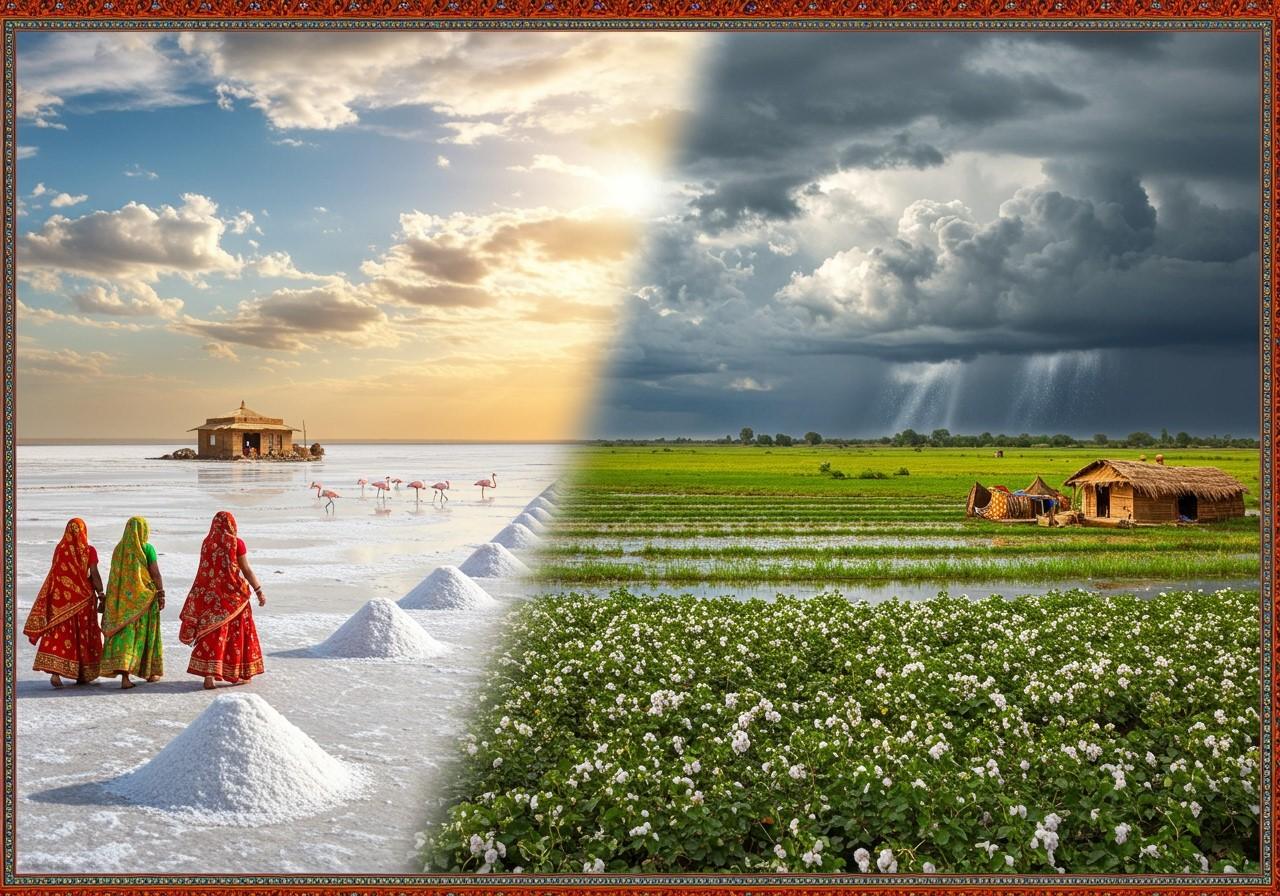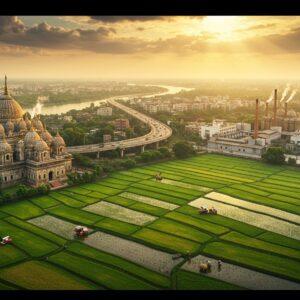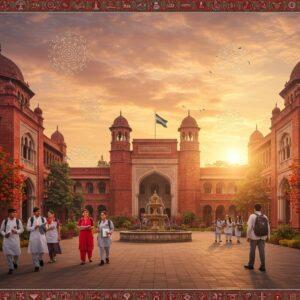
Gujarat, nestled on India’s western coast, experiences a unique climate unlike other regions. Understanding this climate is crucial for travel planning, agriculture, and daily life. This guide delves into the factors shaping Gujarat’s weather, encompassing geographical location, topography, and seasonal shifts.
Geographical Influence
Gujarat’s location significantly impacts its climate. Situated between 20.1°N and 24.7°N latitude, and 68.4°E and 74.6°E longitude, Gujarat falls within the tropical zone. Its proximity to the Tropic of Cancer results in abundant solar radiation, leading to elevated temperatures. The Arabian Sea to the west moderates humidity, while the Rann of Kutchh in the north introduces aridity. Varied topography, from coastal plains and hills to desert, creates diverse microclimates.
Decoding Gujarat’s Heat
Several factors contribute to Gujarat’s high temperatures:
- Solar Radiation: The Tropic of Cancer’s passage through Gujarat results in direct sun, especially during summer.
- Coastal Influence: Coastal areas experience moderated temperatures due to the Arabian Sea, while inland areas face extreme heat.
- Desert Proximity: The Thar Desert’s proximity increases aridity and heat.
- Urbanization: Rapid urban growth leads to the ‘urban heat island’ effect, raising city temperatures.
- Wind Patterns: Hot northwestern winds during summer intensify the heat.
- Vegetation: Sparse vegetation absorbs more heat, increasing overall temperatures.
- Monsoon Delay: A delayed monsoon prolongs the summer heat.
Understanding Gujarat’s Lower Rainfall
Gujarat’s lower rainfall is due to several reasons:
- Monsoon Impact: The southwest monsoon’s effect on Gujarat is less due to the state’s location.
- Rain Shadow: The Western Ghats create a rain shadow effect, reducing rainfall in Gujarat.
- Arid Zones: The Rann of Kutchh limits moisture-laden winds, affecting rainfall.
- Cyclones: While cyclones bring heavy rain, they are sporadic and not a reliable source.
Seasonal Weather Patterns
Summer (March-June)
Gujarat experiences intense heat, often exceeding 40°C. Coastal areas are slightly cooler. As of 13 April 2025, the temperature was 37°C with 27% humidity and 11.1 km/h winds. While temporary relief was present, heatwave conditions are anticipated from 15-17 April 2025 in Saurashtra, Gujarat, and Kutch.
Monsoon (June-September)
The monsoon brings relief, with southern Gujarat receiving moderate to heavy rainfall. Northern areas get less rain. Occasional cyclones bring heavy rain and strong winds.
Post-Monsoon (October-November)
This period sees decreasing temperatures and occasional showers. It’s a pleasant transition to winter.
Winter (December-February)
Winter is mild, ranging from 10°C to 25°C, making it ideal for travel and outdoor activities.
Cyclone Season
Cyclones occur during monsoon months, affecting coastal areas with heavy rain and winds.
Impact on Life and Agriculture
Gujarat’s climate significantly influences agriculture and daily life:
- Crop Choices: Drought-resistant crops are favored.
- Water Management: Efficient irrigation and rainwater harvesting are crucial.
- Heat Adaptation: People adapt by scheduling outdoor activities during cooler times.
- Festivals: Major festivals are celebrated during cooler seasons.
- Clothing: Lightweight cotton is preferred.
- Urban Planning: Cities incorporate green spaces to mitigate urban heat.
Poojn.in: Your Comfort Companion in Gujarat’s Climate
Poojn.in offers products suited for Gujarat’s weather:
For Summer:
- Cotton Asanas and Prayer Mats: Breathable materials for comfortable prayers.
- Traditional Durries: Ideal for sitting during hot afternoons.
- Gongadi Mats: Locally made mats that stay cool.
Visit www.poojn.in for more climate-appropriate items.
Conclusion
Understanding Gujarat’s climate is essential. By appreciating its unique weather, residents can prepare for extremes, and visitors can plan their trips effectively.
FAQs
Why is Gujarat so hot? Gujarat’s proximity to the Tropic of Cancer results in direct sunlight, leading to high temperatures.
Why does Gujarat receive less rainfall? The Western Ghats create a rain shadow effect, reducing rainfall in Gujarat.
What’s the best time to visit Gujarat? Winter (November-February) offers pleasant weather for travel.


